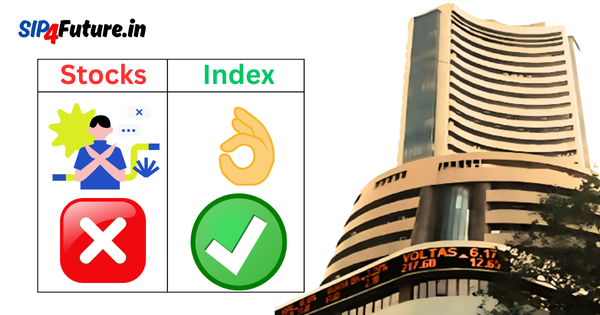Hindustan Petroleum Corporation Limited (HPCL), a leading player in India’s energy sector, has taken a monumental step toward bolstering energy security with its first-ever LNG Trading Supply Agreement with ADNOC Trading. Signed on April 30, 2025, this landmark deal positions HPCL to meet its captive demand while supplying liquefied natural gas (LNG) to other customers across India. The agreement leverages HPCL’s state-of-the-art Chhara LNG Terminal in Gujarat, a facility with a regasification capacity of 5 million metric tonnes per annum (MMTPA) and a storage capacity of 400,000 cubic meters. On the same day, HPCL’s stock on the National Stock Exchange (NSE) closed at ₹391.95, reflecting a modest gain of 0.22%. This article delves into the significance of the LNG agreement, its impact on HPCL’s operations, stock performance, and India’s energy landscape, while exploring the broader market and regulatory factors influencing the company.
What Does the LNG Agreement with ADNOC Trading Mean for HPCL?
The LNG supply agreement with ADNOC Trading, a subsidiary of the Abu Dhabi National Oil Company (ADNOC), marks a pivotal moment for HPCL. It underscores the company’s commitment to diversifying India’s energy mix and transitioning to cleaner fuels. The Chhara LNG Terminal, commissioned in March 2025, is central to this strategy. With two LNG storage tanks and a regasification capacity of 5 MMTPA, the terminal is designed to handle significant volumes of LNG, catering to both HPCL’s refining operations and external customers in industries like power, fertilizers, and city gas distribution.
This partnership with ADNOC Trading ensures a steady supply of LNG, enhancing HPCL’s ability to meet growing domestic demand. According to posts on X, HPCL’s Natural Gas Team has been lauded for securing this deal, which strengthens the company’s LNG portfolio and reinforces its role in India’s clean energy transition. The agreement aligns with global trends, as ADNOC has also signed similar LNG contracts with Chinese firms like ENN Natural Gas and Zhenhua Oil, reflecting the UAE’s growing influence in the global LNG market.
Why Chhara Terminal Is a Game-Changer
The Chhara LNG Terminal, located in Gujarat’s Gir-Somnath district, is a cornerstone of HPCL’s energy security strategy. Commissioned by Gujarat State Petronet Limited (GSPL) in March 2025, the terminal connects to the national gas grid via a newly constructed pipeline, facilitating efficient LNG distribution. Its strategic location near industrial hubs in Gujarat positions it to serve key markets, reducing India’s reliance on imported crude oil and promoting cleaner energy alternatives.
| Chhara LNG Terminal Features | Details |
|---|---|
| Regasification Capacity | 5 MMTPA |
| Storage Capacity | 400,000 m³ (2 tanks) |
| Location | Gir-Somnath, Gujarat |
| Commissioned | March 2025 |
| Connected Pipeline | Chhara to Lothpur (Amreli) |
The terminal’s infrastructure, built by Ace Pipeline Contracts Private Limited, ensures operational efficiency and scalability. As India aims to increase the share of natural gas in its energy mix to 15% by 2030, facilities like Chhara are critical to achieving this goal.
How Does the LNG Deal Impact HPCL’s Stock Performance?
HPCL’s stock price on April 30, 2025, stood at ₹391.95 on the NSE, with a slight uptick of 0.22%. This modest gain reflects cautious optimism among investors, driven by the LNG agreement’s potential to enhance HPCL’s revenue streams and market positioning. However, the stock’s performance must be viewed in the context of broader market dynamics and sector-specific challenges.
Recent Stock Trends and Market Sentiment
According to Moneycontrol, HPCL’s stock has shown resilience despite a bearish outlook for oil marketing companies (OMCs) in early 2025. On April 23, 2025, the company reported a surge in open interest, reaching 45,441 contracts with a trading volume of 27,622 contracts. Although the stock price declined marginally, it remained above key moving averages, signaling sustained investor interest.
The LNG agreement has sparked positive sentiment, as evidenced by posts on X from accounts like @HPCL and @CNBCTV18Live, which highlighted the deal’s role in advancing energy security. However, analysts remain cautious due to external pressures, such as fluctuating crude oil prices and government policies. For instance, a LiveMint report dated April 22, 2025, noted bearish calls on OMC stocks, including HPCL, due to unsustainable auto fuel marketing margins and potential excise duty hikes.
Sectoral Impact on HPCL’s Stock
HPCL operates in the oil and gas sector, which is heavily influenced by global crude oil prices, geopolitical developments, and domestic policies. The decline in Brent crude prices to a four-year low of $63 per barrel in April 2025 benefited OMCs by lowering input costs, leading to a 3.7% intraday rise in HPCL’s stock price on April 21, 2025. However, the sector faces challenges from rising LPG under-recoveries, estimated at ₹41,340 crore for FY25, which have not been compensated in the Union Budget.
The biodiesel sector also impacts HPCL’s operations. In April 2025, Rajputana Biodiesel Limited secured letters of intent from HPCL, IOCL, and BPCL for supplying 200,000 KL of biodiesel between April and July 2025. This move aligns with India’s push for renewable energy, potentially boosting HPCL’s sustainability credentials and stock appeal among ESG-focused investors.
When Did Government Decisions Influence HPCL’s Market Position?
Government policies play a significant role in shaping HPCL’s operations and stock performance. On April 8, 2025, the Indian government increased the price of a 14.2 kg LPG cylinder by ₹50 and raised the excise duty on petrol and diesel by ₹2 per litre. These measures led to a 3% intraday gain in HPCL’s stock, as reported by Business Standard. The LPG price hike reduced under-recoveries from ₹189 to ₹144 per cylinder, improving OMCs’ financial health.
Additionally, the government’s commitment to fiscal stability in the oil and gas sector, as stated by Petroleum Minister Hardeep Singh Puri, has bolstered investor confidence. The absence of new taxes, such as a windfall profits tax, supports HPCL’s long-term growth prospects. The Ministry of Petroleum and Natural Gas has also prioritized expanding LNG infrastructure, aligning with HPCL’s investments in the Chhara Terminal.
Global Market Scenario and HPCL’s Positioning
The global energy market in April 2025 presents both opportunities and challenges for HPCL. The decline in Brent crude prices has alleviated cost pressures, but global growth concerns and a narrowing discount on Russian crude (from $2.6/bbl in December 2024 to $1.1/bbl in January 2025) pose risks. Russia’s share of India’s crude imports rose to 36.4% in January 2025, highlighting HPCL’s reliance on cost-effective suppliers.
The LNG agreement with ADNOC Trading positions HPCL to capitalize on the growing global LNG market. ADNOC’s recent deals with Chinese firms, reported by Reuters, indicate robust demand for LNG, which could stabilize supply chains and pricing for HPCL. Furthermore, India’s push to expand its LNG regasification capacity, as outlined in the Economic Survey 2024-25, supports HPCL’s strategic investments.
How Does HPCL’s Debenture Issue Reflect Financial Strategy?
On April 29, 2025, HPCL issued ₹2,500 crores worth of debentures maturing in 2030 with a coupon rate of 6.73%. This move strengthens the company’s financial flexibility, enabling investments in infrastructure like the Chhara Terminal and renewable energy projects. The debentures, rated highly by credit agencies, reflect investor confidence in HPCL’s long-term growth.
| HPCL Debenture Details | Details |
|---|---|
| Issue Date | April 29, 2025 |
| Amount | ₹2,500 Crores |
| Maturity | 2030 |
| Coupon Rate | 6.73% |
The funds raised are likely to support HPCL’s green energy initiatives, including ethanol production and renewable energy projects, as outlined in its corporate website. This aligns with India’s net-zero ambitions by 2070, enhancing HPCL’s appeal to sustainability-focused investors.
What Lies Ahead for HPCL’s Energy Security Vision?
HPCL’s LNG agreement and Chhara Terminal position it as a leader in India’s energy security landscape. The company’s diversified portfolio, spanning crude oil refining, LNG, biofuels, and renewables, mitigates risks from volatile crude prices. Its strategic partnerships, such as with ADNOC Trading, enhance supply chain reliability and market reach.
The global shift toward cleaner fuels favors HPCL’s investments in LNG and biofuels. India’s LNG demand is projected to grow at a CAGR of 7% through 2030, driven by industrial and power sector needs. HPCL’s ability to market LNG to diverse customers strengthens its revenue potential and stock outlook.
Future Targets and Historical Returns
Analysts have mixed projections for HPCL’s stock, reflecting sector-specific uncertainties and growth potential. Below are future target prices suggested by research institutes as of April 2025:
| Research Institute | Target Price (₹) | Recommendation | Upside Potential |
|---|---|---|---|
| Antique Stock Broking | 600 | Buy | 75% |
| Kotak Securities | 250 | Sell | -36% |
| JM Financial | 300 | Sell | -23% |
Historical Returns:
- 1-Year Return (April 2024–April 2025): +10.54% (NSE)
- 5-Year Return (April 2020–April 2025): +92.3%
- 10-Year Return (April 2015–April 2025): +145.7%
These returns highlight HPCL’s resilience despite sector volatility. The LNG agreement and Chhara Terminal are expected to drive long-term growth, though short-term challenges like excise duty hikes and LPG under-recoveries may temper gains.
Conclusion
HPCL’s LNG Trading Supply Agreement with ADNOC Trading is a strategic milestone that enhances India’s energy security and positions the company as a leader in the clean energy transition. The Chhara LNG Terminal, coupled with HPCL’s diversified portfolio and prudent financial strategies, strengthens its market position. While stock performance reflects cautious optimism, global market dynamics and government policies will shape its trajectory. Investors should weigh the company’s long-term potential against sector-specific risks, keeping an eye on evolving energy trends.
Disclaimer: The information provided in this article is for educational purposes only and does not constitute financial advice. Investing in stocks involves risks, and past performance is not indicative of future results. Readers should conduct their own research or consult a financial advisor before making investment decisions.




